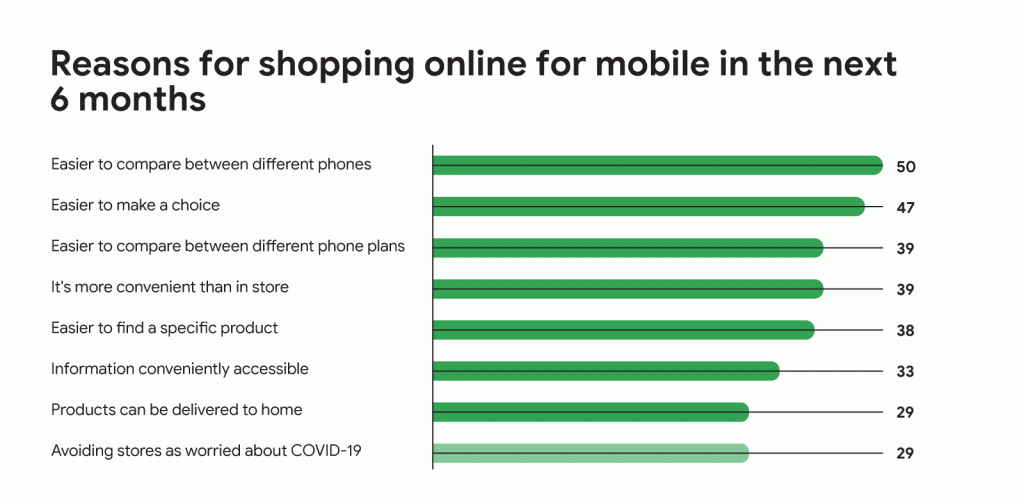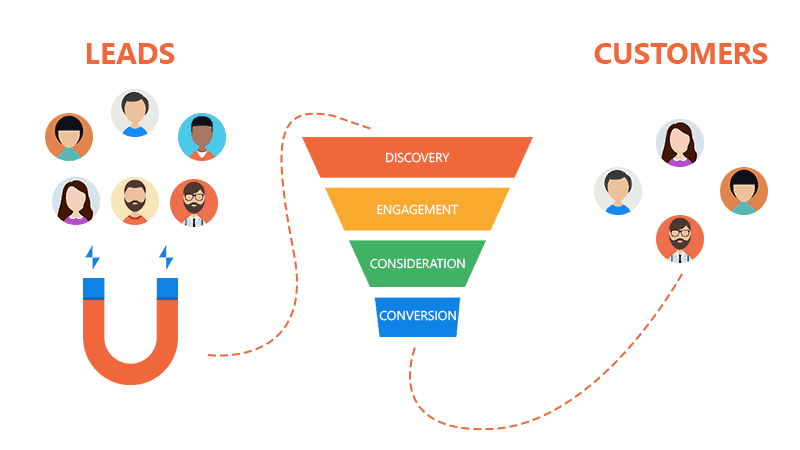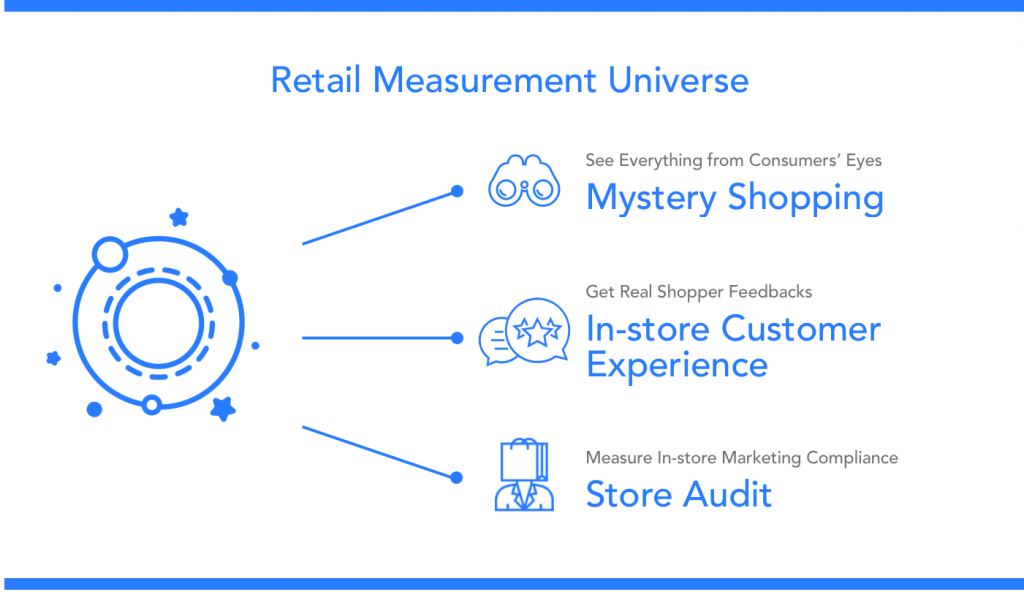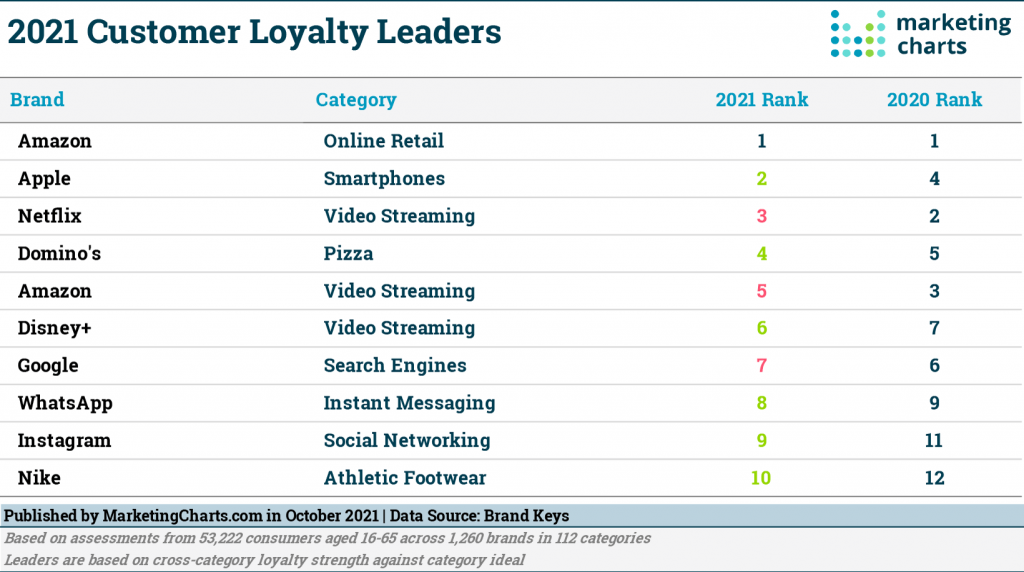7 Ways To Create A Profitable Retail Marketing Strategy
We are constantly bombarded with data on customer purchasing habits, but what about the other end of the equation—how do you generate more sales for your business?
Many retailers believe that reducing prices is the only way to increase profits. While this may be true in certain situations, it can backfire when done in a way that alienates your current customer base. We'll tell you why lowering prices isn't the best strategy and what you should do instead.
Whether a big box or a small boutique, running a profitable retail marketing strategy is essential; here are seven expert tips on making your store a great place to visit.
Table of Contents
1 – Know your Target Audience

Targeted marketing focuses on a group of people based on their interests, needs and behaviours – not the other way around. It requires thinking about who the audience is and how you want to reach them.
The three main approaches to targeted marketing are:
- Market segmentation
- Interest profiling
- Behavioural targeting
Here's a quick rundown of each approach and the type of information you need to consider when considering them.
Market Segmentation
Market segmentation defines your target audience based on shared characteristics such as gender, age, occupation, income and location. The process usually involves gathering information about your customers using surveys and interviews.
It's an approach you can use to understand customer behaviour and attitudes, but it's only one part of the picture.
Interest Profiling
Interest profiling is a technique where you collect customer data through questions, surveys and analyses of their websites and social media interactions. This type of research helps determine what people are interested in and what messages they are responding to.
Using this information, you can find out what customers want, where they are looking online, what they want to buy and what they are prepared to pay.
Behavioural Targeting
Behavioural targeting is about understanding and influencing the behaviour of customers. You can do this by guaranteeing you are offering the right message at the right time and place and encouraging the right action.
For example, a bank might send a text message at the start of a week to people who have been late with a payment to remind them and ask them to pay up.
But there's a risk with this approach as you need to ensure you aren't ‘pushing' customers into taking an action you don't want them to take.
So, for example, if you have a high-risk product, you might want to show customers how much safer it is than the competition. You might also want to encourage customers to go out and try it.
Targeting is a crucial part of the sales process, and knowing who you are targeting is one of the first steps in planning and preparation.
This can be tricky because it's difficult to measure the impact targeting has on your business and whether you are reaching the people you want.
If you are doing some targeting, it's worth asking yourself the following questions:
- Whom am I targeting?
- What are my marketing objectives?
- What is my sales objective?
- What is my budget?
- Who will be responsible for delivering the project?
- What will be the result?
2 – Understand Their Buying Behaviour

To understand your customer's buying behaviour, you must understand what they want. In this article, I will tell you how to analyse the customer's buying behaviour and determine what they want and don't want.
Find out the buying behaviour of your customers:
First, you need to find out the buying behaviour of your customers. There are various ways to do this. For instance, you can ask your customers. Or, you can analyse their online purchase history.
Various third-party tools give you insights into your customer's buying behaviour. But before you start analysing your customers' buying behaviour, you must first understand what they want.
Find out what your customer wants.
It would be best if you found out what your customer wants. This is very important to building a successful retail marketing strategy. If you fail to identify what your customer wants, you may do things they don't like and thus lose them as customers.
There are different approaches to finding out what your customers want. Here are a few of those methods.
- First, you can ask your customer directly.
- Another way is to analyse your customers' online purchase history.
- A third option is to use a third-party survey tool.
The above methods are just a few ways to determine your customers' wants.
Identify the customer's pain point:
The next step is to identify the customer's pain point.
A pain point is something that your customer finds to be a problem. You can get information about the customer's pain points by asking them.
You can also find out what they want by analysing their online purchase history. Once you know what your customer wants, you can discover what your customers find to be a problem.
You can then develop your retail marketing strategy based on this.
Create the right content:
Create the right content for your customers. It's easy to write the perfect copy for a product, but how to write the right content for your customers?
If you have no idea what your customers want, you'll never know what to write. You need to identify their pain points to determine what your customers want. You can get the customer's pain points by asking them. After that, you need to analyse their online purchase history. Then, you need to identify what they want and don't want. Once you know what your customer wants, you can create the right content for them.
Market your product to your target audience:
Your last step is to market your product to your target audience. You can do this by creating advertisements that are relevant to your customer. You should send these advertisements through channels your customers communicate with you, such as social media websites or email.
3 – Find The Best Ways To Reach Them

As technology has developed, the way people shop has changed dramatically. The internet has become a significant source of information for many. As a result, there has been a rise in eCommerce platforms. These platforms allow customers to purchase products directly from the web.
Retail stores have to adapt to the modern world. Customers are now more demanding and expect better service and improved customer experience. Retail stores must provide the best possible communication methods with their customers.
Here are three ways to reach your retail customers effectively:
1 – Mobile Marketing
Mobile marketing is one of the best ways to connect with your customers. You can target your audience through mobile devices like smartphones and tablets. This type of marketing provides excellent results because most people use their mobile devices while shopping in the store.
This makes it easier for you to communicate with your customers and gives you an excellent opportunity to sell your products and services.
There are many different strategies you can use to reach your customers. You can use SMS, MMS, and push notifications. These forms of communication are easy to use and will help you reach your customers.
2 – Online Advertising
Another suitable method of reaching customers is by using online advertising. Today, most people browse the internet before shopping for a product or service. Therefore, you must provide your customers with the correct information on your site.
The first thing to do is ensure that your site is easily accessible. Your customers will only visit your site if it is easy to navigate.
After this, you should create a solid call to action (CTA). This means you must include a button encouraging your customers to act upon what you're trying to convey.
You can also use banners to promote your business. This will help you to attract the attention of your customers.
3 – Social Media Marketing
Social media marketing is another effective way to reach your customers. This is because people use social media to share information. They also use it to look for new things to buy and information on products and services. Therefore, this allows you to connect with your customers and get them to act upon your call to action.
There are different types of social media platforms. Facebook, Instagram, Twitter and Pinterest are a few examples of social media platforms.
These platforms allow you to create ads and posts to share with your customers. The good thing about social media is that it is free.
4 – Develop a Conversion-Based Marketing Plan

A conversion-based retail marketing strategy helps your business generate sales leads by converting leads into customers. This marketing strategy requires you to understand what works and doesn't work to turn leads into customers.
This marketing strategy maximises the likelihood of buying a product or service by focusing on the people most likely to buy your product.
Conversion-based marketing strategies use data and analytical techniques to determine which customers will most likely become customers. This is done to help you understand whom to target and how to reach them.
A conversion-based retail marketing strategy should help your business generate new sales leads by converting leads into customers. It may be used as a standalone strategy or integrated into your marketing efforts.
The following are the main components of a conversion-based marketing strategy.
1 – Targeting
The first thing you should do in your conversion-based marketing strategy is decide whom to target. This step is crucial because it gives you a clear idea of whom you will market to.
Targeting is discovering which groups of people are more likely to buy your products or services. To identify these groups, you should look at demographic data such as age, gender, income and interests.
In addition, you should also look at other factors such as geographic location, marital status and occupation.
2 – Measuring
Measuring is the second step in your conversion-based retail marketing strategy.
Measuring your strategy's success is vital because it provides you with the necessary data to assess your results. This data is collected using tools such as Google Analytics, Adobe Analytics and Hotjar.
Analytics tools can help you track metrics such as traffic, conversions, social media shares, and website visits. These data provide valuable insights and help you develop and test your strategy.
3 – Personalisation
The third step in your conversion-based retail marketing strategy is personalisation. Personalisation involves taking the customer segmentation analysis and applying it to the customer journey.
When you personalise your messages, you tailor your communications so they are relevant to each individual. This increases the chances of the customer interacting with you.
Personalisation helps keep customers engaged and ensures they don't lose interest. It also helps keep the customer on your site longer, increasing the chance of a conversion.
4 – Tracking
Tracking is the final step in your conversion-based retail marketing strategy.
Tracking is used to evaluate whether or not your strategy was successful. This helps you to identify what worked and what didn't.
Tracking also helps you to analyse the success of your strategy over time. This is done by tracking and analysing metrics such as web traffic, conversions, and social media shares.
5 – Measure and Optimise Your Marketing Efforts

In today's fast-paced retail world, marketing experts have many tools to help them improve their marketing strategies and tactics.
These days, online retailers have come a long way from having just a website and a few advertisements on Google to building entire eCommerce sites. While some may consider the shift from traditional marketing techniques to online efforts a considerable step forward, this transition has opened the door for many new challenges.
You have much to keep track of as an online retailer, but the good news is that you don't have to do it alone. With the help of a few online resources, you can easily manage your marketing and advertising efforts to focus on growing your business.
Measure the success of your current campaigns.
You've probably heard that one size does not fit all. If you measure the results of every marketing effort, you will quickly realise that there isn't enough time in the day to complete everything.
To determine what works best for your business, you must look at what your customers do when they visit your site. It would be best to understand who is visiting your site and how they came to it.
With this information, you can build a better understanding of the traffic coming to your site, and you can even build custom metrics to determine whether specific methods of marketing are working or not.
One of the biggest problems with tracking is that you need to have the right tools. Some of the most important metrics to measure are:
- Number of visitors
- Page views
- Bounce rate
- Time spent on your site
- Referrals
Keep your target audience in mind
As an online retailer, your job is to reach out to people interested in your products. If your audience is unaware of your existence, you're already behind the competition. For this reason, you need to ensure that your marketing efforts target the right people.
The best way to attract the attention of new customers is through search engine optimisation (SEO). Optimising your site can improve your brand's visibility and increase the likelihood that people searching for your products will find your site.
You should also ensure that your site is well-designed and easy to use. You can accomplish this by using responsive web design and testing your site on different devices.
Lastly, make sure that you use social media outlets to advertise your brand. You can use these platforms to engage with your audience and even create content tailored specifically to each platform.
6 – Build Relationships With Customers

Customers are an essential part of any business. Today, I will share some critical tips for building customer relationships for retail marketing.
Customer relationships are crucial to every retail business. When you are developing your relationship with your customer, there are many things you should consider. Here are some great ways to do that.
1 – Always be available.
Always be available for your customers. It would help if you were always accessible because customers always require your products/services.
When you're ready to provide your customer with your product or service, ensure you have the necessary information in mind and your system to ensure hassle-free delivery. Also, provide your customers a toll-free number or email address so they can contact you whenever needed.
2 – Keep consistent communication.
Communication is the key to establishing long-term relationships with your customers. Never be late in replying to emails, and never miss any communication.
Also, make sure you keep your communications simple. Be honest and upfront with your customers, and avoid being too flashy with your marketing messages. Make sure your customers know what they're getting into and their expectations.
3 – Always try to go above and beyond.
Always try to do more than your customers expect from you. Always surprise them with a gift, a discount or some other incentive. This will encourage them to return and give you positive feedback.
4 – Show your gratitude.
When your customers are happy, make sure to show your appreciation. Always thank your customers for choosing your company and offer them an incentive if they're happy.
Customer service can be the difference between a satisfied and a repeat customer. Make sure you provide the best customer service possible. If you don't take good care of your customers, they will spread negative word-of-mouth about you, which could negatively impact your business.
It is essential to know when to let go of a customer. You should never push someone into buying something they do not want.
5 – Always put yourself out there.
Always be visible on social media platforms like Facebook, Twitter, Instagram, and LinkedIn. By doing this, you will establish a good relationship with your customers.
6 – Have a plan.
Develop a plan for your customer's needs and expectations. You need to be able to handle the unexpected and be prepared for any kind of situation.
Create a plan tailored to your customer's needs and includes everything they'll need to achieve their goals. Include a process to follow and document how you will deliver your promises. Be aware of what you can't control, and be flexible enough to respond.
The most successful customers understand the company's mission and know their role in achieving its goals.
7 – Don't be afraid to share your experiences.
Always be ready to share your own experiences and your customers. Customers love hearing how their friends benefit from your company's services.
8 – Offer free trials.
Offer a free trial to all your customers. This way, you'll be able to understand what your customers are looking for and how you can help them.
9 – Know your competition.
Know who your competitors are and how you can beat them. Always stay ahead of your competition by knowing what your customers want and offering something no one else offers.
10 – Always remain humble.
Even though you are the CEO of your company, you don't need to be arrogant. Remember that your employees are your most important asset, and you should treat them like your family.
If you think you are a good leader, you will know what kind of attitude to have in the workplace. Being a great leader is not about having all the answers but also about listening to the needs of your employees. If you do this, you will get great results from your employees, and you can expect to achieve much more than when you were just a regular employee.
7 – Provide Reasons for Them Coming Back

Retailers should provide reasons to their customers to return. Customers who like what they see or experience need reasons to return, such as “I would buy it again” or “I want to tell my friends about this.”
If a customer is unsatisfied with the product or service they have received, providing reasons to return helps the company attract new and retain current customers.
In addition, retailers can use online feedback platforms to identify the most common complaints or issues their customers have about a product or service and take measures to prevent these issues in the future.
Online feedback systems can help retailers understand customers' expectations, desires, and perceptions. This feedback provides information that the retailer can use to improve the overall quality of its products and services.
To attract customers to return, businesses should consider offering discounts to increase sales. Discounts can motivate customers to return by reducing prices or increasing perceived value. The most popular discount is a voucher.
Retailers can also create special offers to increase customers' likelihood of returning. For example, retailers may offer free shipping or gift wrapping to increase customers' chances of returning.
In addition, businesses can encourage customers to return by offering rewards, such as free samples or complimentary products, which gives customers a reason to return.
Retailers can also attract customers to return through special offers. One way to make customers return is to offer exclusive promotions to returning customers. For example, if the retailer has an ongoing special promotion, customers who return will receive special offers unavailable to non-returning customers. By offering special offers to returning customers, businesses can increase customer loyalty. Retailers can also offer special discounts or promotions to customers who buy specific items.
Retailers should use various channels to attract customers to return. One way to attract customers is to offer promotional codes, which allow customers to receive free shipping or other benefits. When a customer returns, the retailer can redeem the code.
If a retailer offers vouchers, customers must return the vouchers to the retailer to receive the desired discounts. Another channel retailers can use is coupons, which allow customers to obtain discounts. Coupons are usually offered in newspapers, magazines, or flyers and are typically used for specific products and services.
Retailers may also offer incentives to customers who share online reviews. Rewards such as discounts, giveaways, and freebies are a great way to encourage customers to return.
When customers return, retailers should offer them the chance to leave feedback. A feedback tool can help retailers understand how they can improve their customer service. In addition, the feedback can help identify customers' most common complaints or issues about a product or service and take measures to prevent these issues.
Online feedback systems can help retailers understand customers' expectations, desires, and perceptions. This feedback provides information that the retailer can use to improve the overall quality of its products and services.
Conclusion
For all retailers, the key to creating a profitable retail marketing strategy is using various online tools to create your sales funnel and funnels.
These tools, such as Amazon's Associate's Program, Shopify's Affiliate Program, Facebook's Audience Insights, and Google Adwords, can create a seamless sales funnel and build your customer base differently. This data allows you to change your marketing campaigns and adjust your focus to meet your sales goals.
